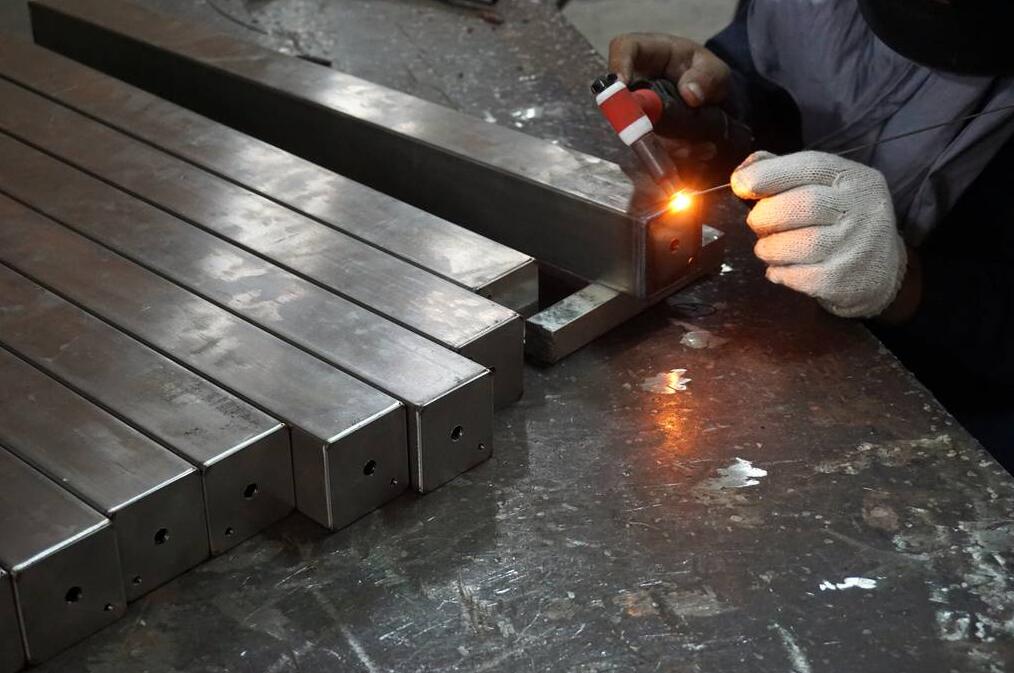How to realize rapid cooling of 316L stainless steel weld?
 Aug 19, 2022|
Aug 19, 2022| View:255
View:255316L stainless steel belongs to austenitic stainless steel, which has good plasticity, toughness, corrosion resistance and excellent comprehensive performance.
We carried out a welding test on 316L stainless steel, using electrode arc welding (SMAW). The thickness of the 316L stainless steel plate used in the test is
40mm, the X-shaped equilateral bevel of 55°, the blunt edge of 1mm, and the welding adopts the 1G flat welding position. The diameter of the electrode used
for welding is 3.2mm, the drying is 350℃×1h before welding, the welding current is 80-120A, the arc voltage is 24-28V, and the maximum heat input is 14.4
kJ/cm.
During the welding test, using the same welding parameters, we welded 316L stainless steel with the following three cooling methods.

1. Air Cooling
After each weld is welded, use compressed air to cool the weld bead, and the compressed air blows through the air duct in the direction parallel to the weld to
cool the weld.
The test found that the effect of air cooling on the weld is not ideal, and the cooling rate of the weld is slow. After each weld is welded, it takes more than 20
minutes for the temperature of the weld to drop to about 40 °C (not hot to touch).
2. Water Immersion Cooling on The Back of The Weld
First weld the butt groove of the welding test plate on one side, clean the root on the back, grind and clean it up, and after PT inspection confirms that there is
no defect, immerse half of the thickness of the test plate in water (the side that has been bottomed and welded is immersed in water). Then weld the rest of the
weld, so that the back of the weld is immersed in water to achieve the purpose of cooling the weld. Due to the poor thermal conductivity of 316L stainless steel,
the cooling method of immersion in water on the back of the weld is not ideal, and the cooling rate of the weld is not ideal. not hot).
3.Weld Water Cooling
On the basis of the second cooling method, not only the welding test plate is immersed in water, but also after each weld is welded, water is poured directly onto
the surface of the weld bead to cool the weld. The test shows that the cooling rate of the weld seam is significantly accelerated by the cooling method of watering
the weld seam. After each weld is welded, it only needs to be watered and cooled for about 3 minutes, and the temperature of the weld seam will drop to about 40°C
(not hot to the touch).
We have carried out the welding procedure qualification of 316L stainless steel which adopts the welding seam water cooling method. The 316L stainless steel test
plate and welding parameters used in the process qualification are the same as those in the welding test. After the bottom welding of the welding test plate is completed,
the test plate is immersed in water. After each welding seam is completed, water is poured directly on the surface of the welding bead to cool the welding seam. When
the temperature of the welding seam drops to about 40 °C, use a hair dryer to The welding seam and the water vapor in the range of 50mm on both sides are blown dry,
polishedand cleaned, and then the next weld bead is welded.
24h after the welding of the test plate is completed, the inspection results are all qualified. The mechanical properties test of the butt joints of the welded test plates was
carried out, all of which were in line with the standard. Welding procedure qualification is qualified.
It is feasible to weld 316L stainless steel by water cooling of the weld seam, which brings benefits to the actual production.






